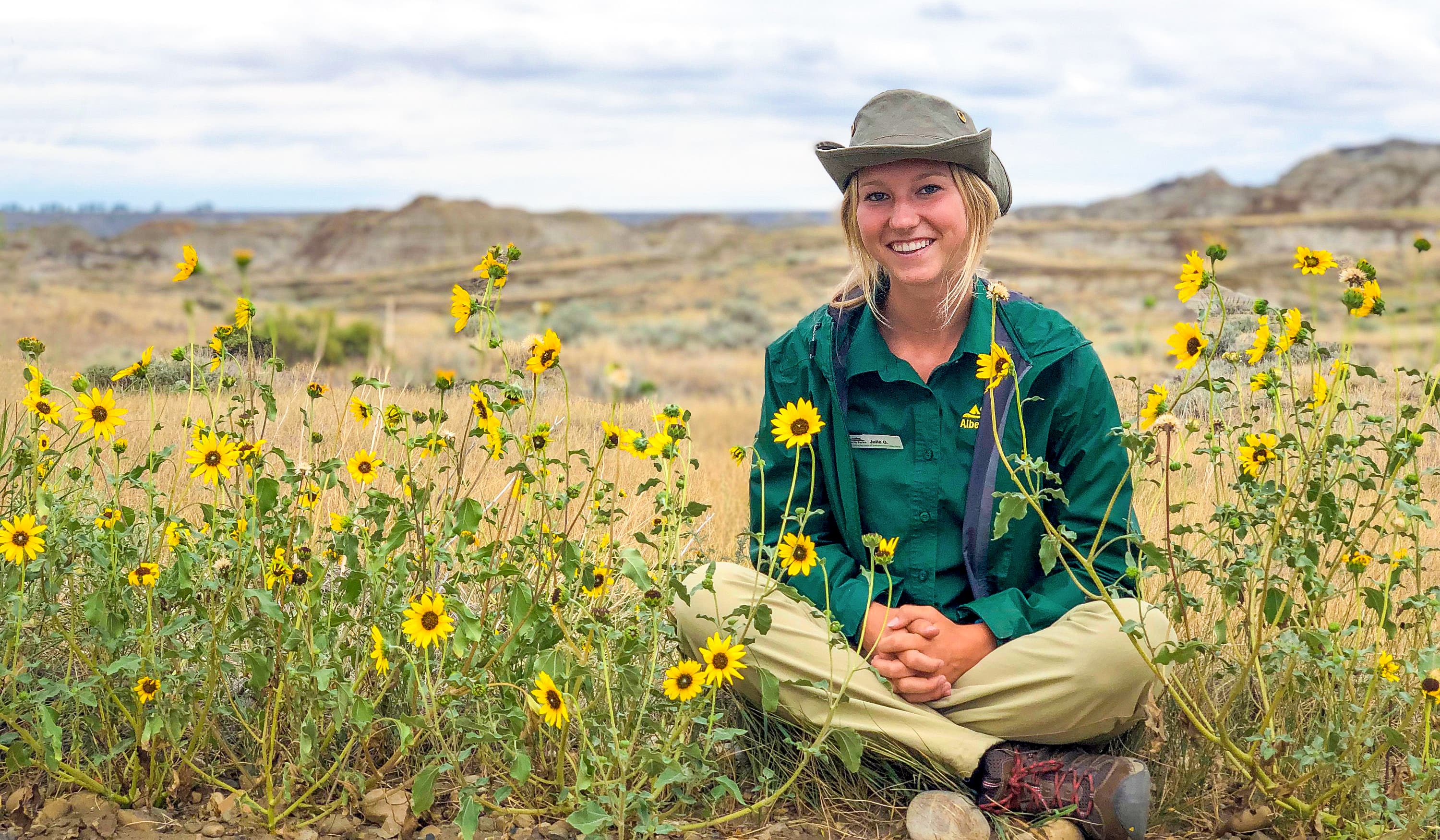When Julie Ostrem was a child, she spent most of her time outdoors on her family’s acreage just outside Sherwood Park, playing with earthworms and collecting bugs. These critter-filled hours, paired with family camping trips and her mother’s influence, shaped the way she viewed the world around her.
“My mother really taught me why caring for the environment is important. We’d always go on walks and pick up bottles and garbage. I think that played a huge role in my relationship with the land,” says Ostrem.
That relationship grew, and when Ostrem started to learn more about climate change, she immediately knew what her dream career would be. She wanted to do her part to help to save the planet and help others cultivate their own relationships with the environment.
“We rely on the environment for everything. We need to be protecting it for the future generations, and even for our generation,” says Ostrem.
While she’s graduating this June with her master of science in Kinesiology, Sport, and Recreation, she started down this path by earning a bachelor of environmental science at the University of Alberta’s Augustana Campus. (She had a strong connection to the campus even before setting foot on the grounds — several of her family members are graduates.)
Ostrem paired her studies with volunteering — for example, serving as president of the Augustana Earthwise club — that allowed her to explore other ways to help the environment.
“She was really good at interacting with fellow students and encouraging them along their sustainability journey,” says Glen Hvenegaard, a professor in Augustana’s Department of Science, an adjunct professor in the Faculty of Kinesiology, Sport, and Recreation, and Ostrem’s graduate school supervisor.
While her undergraduate years were where her passion for environmental education was first sparked, it wasn’t initially an ideal fit — environmental education was something she pursued as a way to conquer her fear of public speaking.
“I was giving a presentation in class and I hated public speaking. I started to get teary eyed, my legs were shaking,” says Ostrem. When she approached her professor, Glynnis Hood, looking for tips on how to improve, Hood suggested environmental education and interpretation as a way to overcome her fear by talking about something she was passionate about.
It worked — Ostrem got an interpreter role at Miquelon Lake Provincial Park, which started a pattern of spending her summers working in seasonal roles for Alberta Parks, refining her public speaking skills as she educated park visitors.
After graduating with her undergraduate degree, Ostrem travelled the world for a period, spending time in Nepal, New Zealand, Thailand and other places. As she was contemplating her eventual return to Canada, Hvenegaard notified her of an opportunity: a research team was hiring a graduate student thanks to grant funding from Mitacs and the Beaver Hills Biosphere. Ostrem’s was the first name that came to his mind.
Ostrem’s master’s thesis focused on UNESCO biosphere reserves. These areas serve as fertile grounds for innovation and research geared toward sustainable development. As she explains, they bring together individuals with environmental expertise with the communities and industries around the biosphere area and serve as a collaborative space to try out interdisciplinary approaches aimed at improving biodiversity.
“That’s their basis — bringing people together for a more sustainable future,” says Ostrem.
Once she realized she wanted to build a career in environmental education and interpretation, she became passionate about ensuring it was delivered in a way that would yield the greatest impact.
She worked as a research assistant to Hvenegaard on a project funded by the Social Sciences and Humanities Research Council that examined how to make interpreters and interpretive programming as effective as possible.
“Being able to create that connection for people to recognize why they should care about the environment is a really fantastic opportunity,” says Ostrem.
“[Interpreters] are on the front lines of interacting with people who we need to recruit to the larger cause of environmental conservation,” adds Hvenegaard.
Alberta has an abundance of parks, and many of the areas Ostrem has worked get visitors from around the world who come to see the striking blue of Lake Louise or the towering, snow-capped Rocky Mountains. Ostrem gets a front-row view as these visitors see those sights for the very first time.
“It’s kind of indescribable,” says Ostrem. “You realize this is a once-in-a-lifetime experience for them. They’re going to remember it for the rest of their life, and you can be a part of it.”
Environmental education is always changing and evolving, Ostrem says, and can involve things like hikes, bus tours, amphitheatre shows and more, all packed with relevant information about the natural areas the visitors are exploring.
“It’s a field where you’re helping connect people to the environment and facilitating those connections for them.”
This summer, Ostrem is spending several months at the Lake Louise Field Unit at Banff National Park, for the first time in a supervisory role, helping mentor other interpreters getting started in environmental education. She hopes to continue working with Parks Canada, with an eye on trading in her seasonal roles for a more permanent position. She’s also interested in pursuing a PhD a few years down the road, once she decides what she’s most interested in.
Ultimately, Ostrem wants to continue nurturing her connection to the land while delivering education that encourages others to do the same.
“Something that always inspires me in this field is to look at the land and all the things it offers us, how many things the land gives us and how much we can give back to it.”
